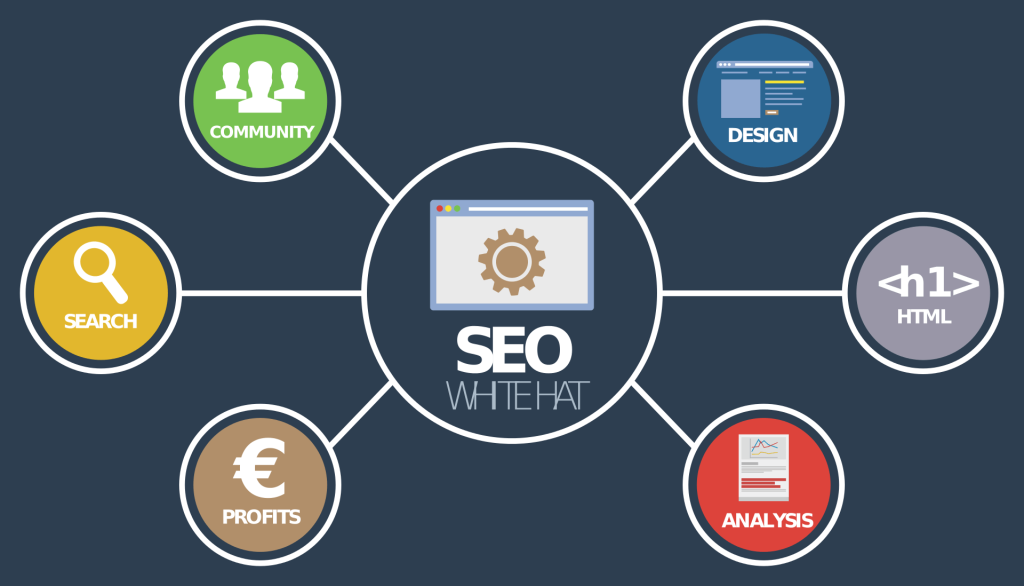In today’s highly competitive online landscape, having a well-optimized website is the key to visibility and success. And at the heart of effective website optimization is on-page SEO. But what exactly is on-page SEO?
On-page SEO refers to the practice of optimizing individual web pages to improve their search engine rankings and drive organic traffic. It involves various factors such as keyword optimization, metadata, content quality, page load speed, mobile-friendliness, and more. By fine-tuning these aspects, you can make your website more attractive to search engines and users alike.
By utilizing on-page SEO techniques, you can ensure that search engines fully understand your website’s content, relevance, and purpose, leading to better rankings and higher visibility in search engine results. This, in turn, can drive more targeted traffic to your site and improve your chances of converting visitors into customers.
Importance of on-page SEO for website ranking
On-page SEO plays a crucial role in determining the ranking of your website in search engine results. It helps search engines understand the relevance and quality of your content, which directly impacts your visibility to potential visitors. Here are some reasons why on-page SEO is essential for website ranking:
- Keyword Optimization: By conducting thorough keyword research and strategically incorporating relevant keywords into your content, you can signal to search engines what your web page is about. This helps search engines match your content with relevant search queries, increasing the likelihood of your website appearing in search results.
- Content Quality: High-quality content is key to engaging users and attracting search engine attention. By creating valuable, informative, and well-structured content, you can establish yourself as an authority in your niche and improve your website’s credibility. This, in turn, can lead to more backlinks and social shares, further boosting your website’s ranking.
- User Experience: On-page SEO also focuses on improving the overall user experience of your website. Factors such as page load speed, mobile-friendliness, and easy navigation contribute to a positive user experience. Search engines prioritize websites that offer a seamless user experience, leading to better rankings.
On-page SEO factors to consider

To effectively optimize your web pages for search engines, there are several on-page SEO factors you need to consider. These factors, when optimized correctly, can significantly improve your website’s visibility and ranking. Let’s explore some of the key on-page SEO factors:
1. Keyword research and optimization
Keyword research is the foundation of on-page SEO. It involves identifying the keywords and phrases that your target audience is using to search for information related to your website. By conducting thorough keyword research, you can gain insights into the search volume, competition, and relevance of different keywords.
Once you have identified your target keywords, it’s crucial to strategically optimize your web page content around them. This includes incorporating keywords into your page title, headings, meta tags, and throughout the body of your content. However, it’s important to strike a balance and avoid keyword stuffing, as search engines penalize websites that engage in such practices.
2. Title tag and meta description optimization
The title tag and meta description are HTML elements that provide information about your web page to search engines and users. Optimizing these elements can significantly impact your website’s click-through rate and visibility in search engine results.
The title tag should accurately describe the content of your web page and include your target keyword. It should be concise, compelling, and within the recommended character limit to ensure it displays properly in search results.
The meta description, on the other hand, provides a brief summary of your web page’s content. It should be compelling, informative, and include relevant keywords. A well-optimized meta description can entice users to click on your website in search results, increasing your organic traffic.
3. URL structure and optimization
The structure and optimization of your web page URLs play a role in both user experience and search engine visibility. A clean, descriptive, and keyword-rich URL can help search engines and users understand the context of your web page.
Ideally, your URLs should be concise, use hyphens to separate words, and include your target keyword. Avoid using unnecessary characters or numbers in your URLs, as they can make them look spammy and may negatively impact your website’s ranking.
4. Header tags and content optimization
Header tags (H1, H2, H3, etc.) are HTML elements that structure the content on your web page. Search engines use header tags to understand the hierarchy and relevance of different sections of your content.
Optimizing header tags involves using them to highlight important keywords and topics. The H1 tag should typically be used for the main heading of your page and include your target keyword. Subheadings (H2, H3, etc.) should be used to break down your content into logical sections, making it easier for both search engines and users to navigate and understand.
5. Image optimization for on-page SEO
Images are an essential part of web page design and can significantly enhance user experience. However, they can also impact your website’s loading speed if not optimized correctly. To ensure your images contribute positively to your on-page SEO efforts, consider the following:
- Compress and resize images to reduce file size without compromising quality.
- Use descriptive file names and alt tags that include relevant keywords.
- Include images in your XML sitemap to improve their discoverability by search engines.
- Implement lazy loading to prioritize the loading of images when they become visible to users.
6. Internal linking and anchor text optimization
Internal linking refers to linking to other pages within your website. It helps search engines understand the structure and hierarchy of your website’s content and allows users to navigate between related pages easily.
When implementing internal links, it’s important to use descriptive anchor text that includes relevant keywords. This not only helps search engines determine the topic and relevance of the linked page but also provides users with context and encourages them to explore your website further.
7. Monitoring and improving on-page SEO performance
Once you have implemented on-page SEO techniques, it’s crucial to monitor and measure their performance. This can be done through various tools and analytics platforms that provide insights into your website’s organic traffic, keyword rankings, bounce rate, and more.
By regularly monitoring your on-page SEO performance, you can identify areas for improvement and make data-driven decisions to enhance your website’s visibility and ranking. This may involve tweaking your keyword strategy, optimizing underperforming pages, or updating your content to align with current search trends. Tools such as Google Search Console are useful for tracking your keywords and their ranking positions in the search engine (plus it’s free so great for those starting out).
In conclusion, on-page SEO is a fundamental aspect of website optimization that can greatly impact your website’s visibility, organic traffic, and conversion rates. By paying attention to factors such as keyword optimization, metadata, content quality, and user experience, you can ensure that your web pages are search engine and user-friendly. So, embrace the power of on-page SEO and unlock the full potential of your website’s success.
